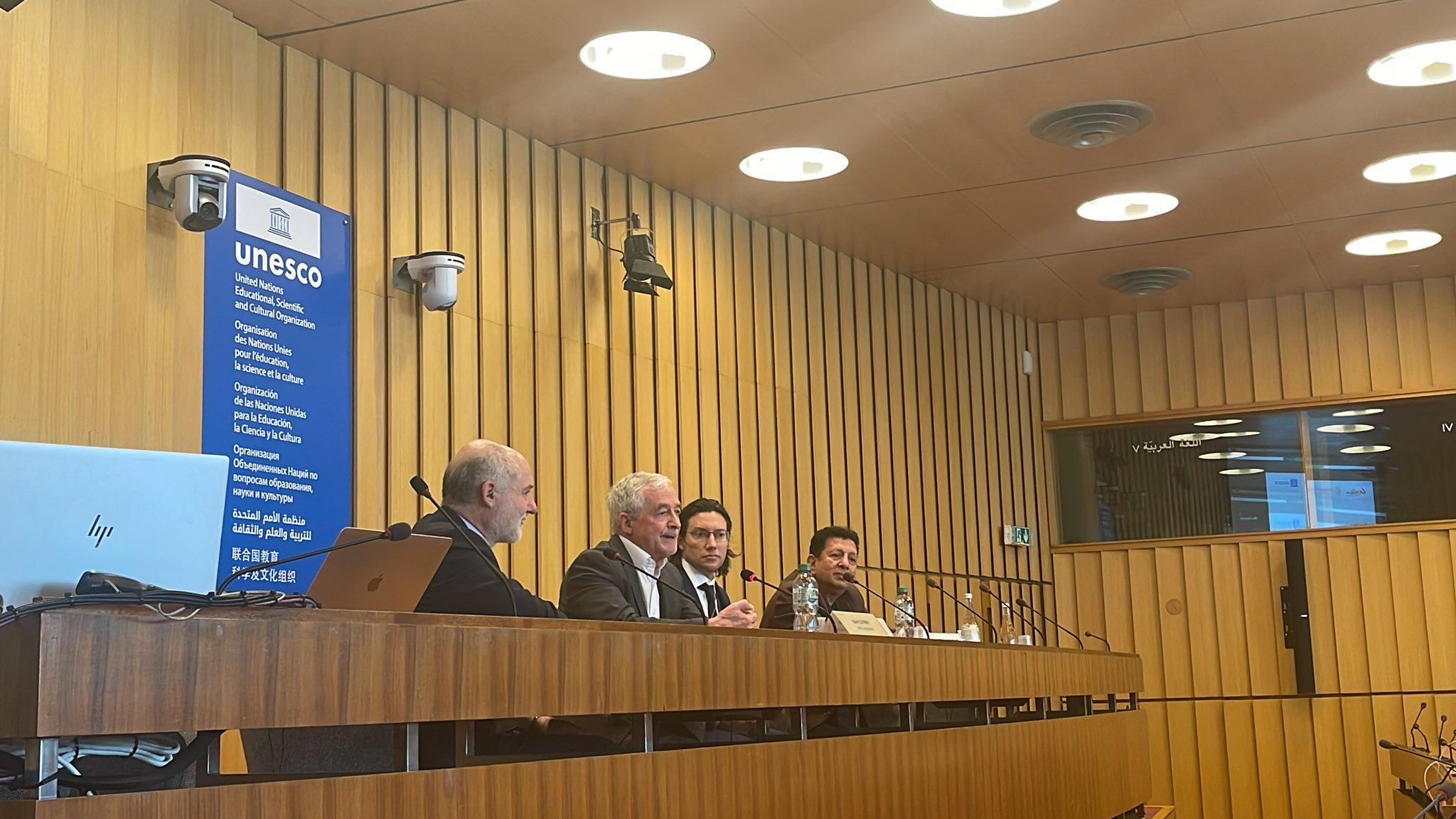The annual symposium of Software Heritage was held as a joint summit with UNESCO at UNESCO’s headquarters in Paris on 7 February. Karel Luyben, president of the EOSC Association (EOSC-A), participated as a panelist on the topic of Open Science.
Software Heritage is building and maintaining the universal software source code archive. Its ambition is to collect, preserve and share the source code of all publicly available software in order to advance cultural heritage studies, industry applications and research. In doing this, Software Heritage contributes to one of the key missions of universities worldwide: the preservation and transmission of knowledge and our scientific heritage.
According to Roberto Di Cosmo, director of Software Heritage, “The source code of software contains valuable scientific and technical knowledge that should be preserved and shared. Software Heritage is a non-profit initiative dedicated to this mission, and the universal source code archive that it maintains plays an important role in building the software pillar of Open Science.”

Representatives from UNESCO highlighted software’s role as a driver for value creation and digital transformation, as well as an enabler for sustainable development. UNESCO’s Memory of the World Programme identifies, preserves, and improves universal access to the world’s documentary heritage and safeguards it for future generations.
In 2021, the UNESCO recommendation on Open Science, adopted by 193 member states, declares that “access to scientific knowledge should be as open as possible”. The EOSC Association, in its role facilitating the development and deployment of the European Open Science Cloud, is a key actor in enabling this broad objective.
In the Open Science panel, EOSC-A President Karel Luyben identified the boundary conditions needed for the development and deployment of EOSC, including those related to competencies, skills, policies and infrastructure, together with the necessity to engage society at large and the EOSC stakeholders.
“EOSC is the European ‘box’ set on top of the layer of FAIR data, or the web of FAIR data, that we hope to create in a world where all the data are connected,” said Luyben.
Major initiatives and activities highlighted by the conference, include:
-
- Software Heritage
- Transform to Open Science Initiative (NASA)
- Cloud Dev Tools (ECLIPSE Foundation)
- Africa Code Week (SAP)
- Open Culture (Creative Commons)
- PEPR MoleculArXiv (CNRS, INRIA, University of Strasbourg, Université Paris Sciences et Lettres and Université Côte d’Azur)
- Memory of the World Programme (UNESCO)
Presentation slides of Director of Software Heritage, Roberto Di Cosmo




